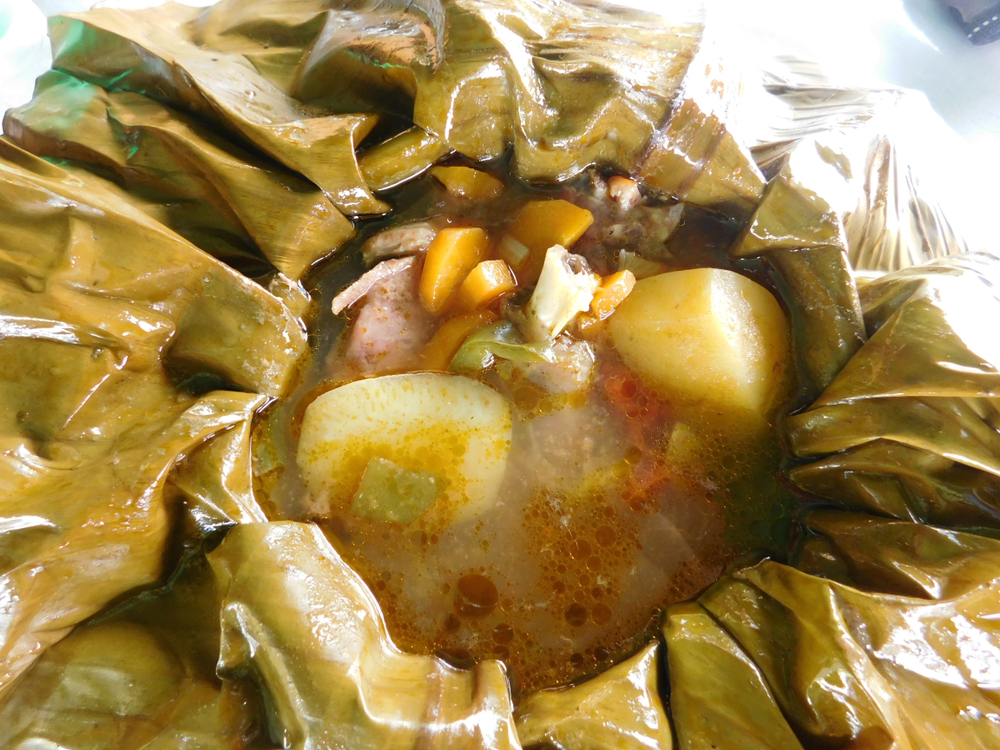Luwombo, a traditional Ugandan stew, is an epitome of the rich culinary artistry of East Africa. A harmonious blend of meat, groundnut sauce, and vegetables, all wrapped in banana leaves and steamed to perfection. This flavorful stew stands out not just for its taste, but for the unique method of preparation. Explore the intricate layers of this Ugandan masterpiece with our detailed guide.
The Rich History Behind Luwombo
Tracing its roots back to the Buganda Kingdom, Luwombo is said to have been introduced by Kabaka Mwanga’s chef at the turn of the 20th century. What started as a royal dish soon became a household favorite, representing celebration and togetherness in Ugandan culture.
Ingredients, Quantities, and Suggestions
- Meat (beef, chicken, or goat) – 500g, cut into pieces
- Peanut sauce – 2 cups
- Vegetables (mushrooms, eggplants, okra) – 1 cup, sliced
- Tomatoes – 2, chopped
- Onions – 2, chopped
- Red bell pepper – 1, chopped
- Garlic cloves – 2, minced
- Chili pepper – 1, finely chopped (optional)
- Oil – 2 tablespoons
- Salt – to taste
- Water – 2 cups
- Banana leaves for wrapping
Suggestions:
– You can make peanut sauce from scratch using roasted peanuts, or you can use store-bought varieties.
– Ensure that banana leaves are cleaned and slightly heated to make them pliable for wrapping.
Step-by-Step Directions and Pointers
- Preparing the Base: In a pot, sauté onions, garlic, and bell peppers in oil until translucent. Add meat pieces and brown them on all sides.
- Adding Veggies: Incorporate tomatoes, vegetables, and chili pepper. Stir occasionally and cook for 10 minutes.
- Peanut Sauce: Introduce the peanut sauce to the pot, mixing thoroughly. Add water and bring to a gentle simmer.
- Wrapping in Banana Leaves: Lay out banana leaves, place generous portions of the stew in the center, and fold the leaves, securing them with a string.
- Steaming: Place the wrapped bundles in a large pot with a little water at the bottom. Steam on low heat for 1-2 hours.
- Serving: Carefully unwrap the banana leaves and serve the luwombo hot with rice or matooke.
Tips:
– The key to luwombo is slow-cooking. Patience ensures all flavors meld perfectly.
– While banana leaves add flavor, ensure they don’t come in contact with the direct flame as they can burn.

Conclusions
Luwombo isn’t just a dish; it’s an experience. The slow steaming, combined with the flavors infused by the banana leaves, creates a culinary delight that’s deeply rooted in Ugandan tradition. With this guide, you can bring the authentic taste of Ugandan luwombo to your table and appreciate a culinary tradition passed down through generations.
Frequently Asked Questions (FAQs)
What makes Luwombo unique?
Luwombo’s uniqueness lies in its preparation – the stew is wrapped in banana leaves and steamed, which infuses it with a distinct flavor.
Can I use aluminum foil instead of banana leaves?
While you can use foil for the steaming process, banana leaves give luwombo its signature flavor. If you must use foil, you’ll miss out on that authentic touch.
What’s the best meat for Luwombo?
Traditionally, beef, chicken, or goat meat are used. However, the choice of meat is subjective and can be tailored to personal preferences.
Is Luwombo served on special occasions?
While luwombo can be enjoyed anytime, it’s often reserved for special occasions and gatherings in Uganda due to its elaborate preparation process.
How do you store leftover Luwombo?
Leftover luwombo can be refrigerated in an airtight container for 2-3 days. Reheat gently before serving.
Savor the authentic Flavors of Uganda with more delightful dishes. Embark on this flavorful adventure with us.
